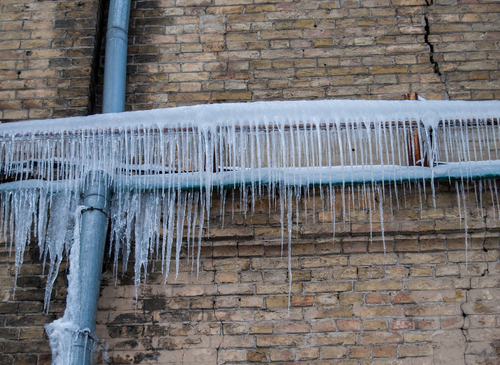Ways to Protect Pipes from Cold Weather Damage: Important Tips
Ways to Protect Pipes from Cold Weather Damage: Important Tips
Blog Article
Presented here below you'll find additional amazing data around Prevent Frozen Pipes .

Cold weather can damage your pipes, especially by freezing pipelines. Here's just how to stop it from taking place and what to do if it does.
Introduction
As temperature levels drop, the risk of frozen pipelines rises, potentially bring about costly fixings and water damage. Comprehending exactly how to stop icy pipelines is vital for property owners in cool environments.
Comprehending Icy Pipes
What creates pipes to freeze?
Pipes ice up when subjected to temperature levels below 32 ° F (0 ° C) for extended periods. As water inside the pipelines ices up, it expands, putting pressure on the pipeline walls and possibly causing them to rupture.
Threats and damages
Icy pipelines can lead to water system disruptions, property damage, and costly repair work. Ruptured pipelines can flooding homes and create extensive structural damage.
Signs of Frozen Pipes
Identifying frozen pipes early can stop them from bursting.
How to identify icy pipes
Search for lowered water circulation from faucets, unusual smells or sounds from pipelines, and visible frost on exposed pipes.
Avoidance Tips
Shielding vulnerable pipes
Cover pipelines in insulation sleeves or use warm tape to safeguard them from freezing temperature levels. Focus on pipelines in unheated or outside areas of the home.
Home heating techniques
Keep indoor rooms effectively warmed, especially areas with plumbing. Open cupboard doors to permit cozy air to circulate around pipes under sinks.
Safeguarding Exterior Plumbing
Garden hoses and exterior taps
Separate and drain yard tubes before wintertime. Install frost-proof faucets or cover outside taps with protected caps.
What to Do If Your Pipes Freeze
Immediate activities to take
If you presume icy pipes, keep faucets open up to alleviate stress as the ice melts. Make use of a hairdryer or towels soaked in hot water to thaw pipelines gradually.
Long-Term Solutions
Architectural adjustments
Think about rerouting pipelines away from outside walls or unheated areas. Include added insulation to attics, basements, and crawl spaces.
Updating insulation
Purchase top quality insulation for pipelines, attic rooms, and wall surfaces. Appropriate insulation helps keep constant temperatures and minimizes the risk of icy pipes.
Conclusion
Protecting against frozen pipelines requires proactive procedures and fast responses. By recognizing the causes, signs, and preventive measures, home owners can protect their pipes throughout cold weather.
5 Ways to Prevent Frozen Pipes
Drain Outdoor Faucets and Disconnect Hoses
First, close the shut-off valve that controls the flow of water in the pipe to your outdoor faucet. Then, head outside to disconnect and drain your hose and open the outdoor faucet to allow the water to completely drain out of the line. Turn off the faucet when done. Finally, head back to the shut-off valve and drain the remaining water inside the pipe into a bucket or container. Additionally, if you have a home irrigation system, you should consider hiring an expert to clear the system of water each year.
Insulate Pipes
One of the best and most cost-effective methods for preventing frozen water pipes is to wrap your pipes with insulation. This is especially important for areas in your home that aren’t exposed to heat, such as an attic. We suggest using foam sleeves, which can typically be found at your local hardware store.
Keep Heat Running at 65
Your pipes are located inside your walls, and the temperature there is much colder than the rest of the house. To prevent your pipes from freezing, The Insurance Information Institute suggests that you keep your home heated to at least 65 degrees, even when traveling. You may want to invest in smart devices that can keep an eye on the temperature in your home while you’re away.
Leave Water Dripping
Moving water — even a small trickle — can prevent ice from forming inside your pipes. When freezing temps are imminent, start a drip of water from all faucets that serve exposed pipes. Leaving a few faucets running will also help relieve pressure inside the pipes and help prevent a rupture if the water inside freezes.
Open Cupboard Doors
Warm your kitchen and bathroom pipes by opening cupboards and vanities. You should also leave your interior doors ajar to help warm air circulate evenly throughout your home.

I came across that post on How To Avoid Freezing Pipes while doing a search on the web. Enjoyed our content? Please share it. Let other people discover it. We treasure reading our article about 6 Ways to Prevent Frozen Pipes.
Get Estimate Report this page